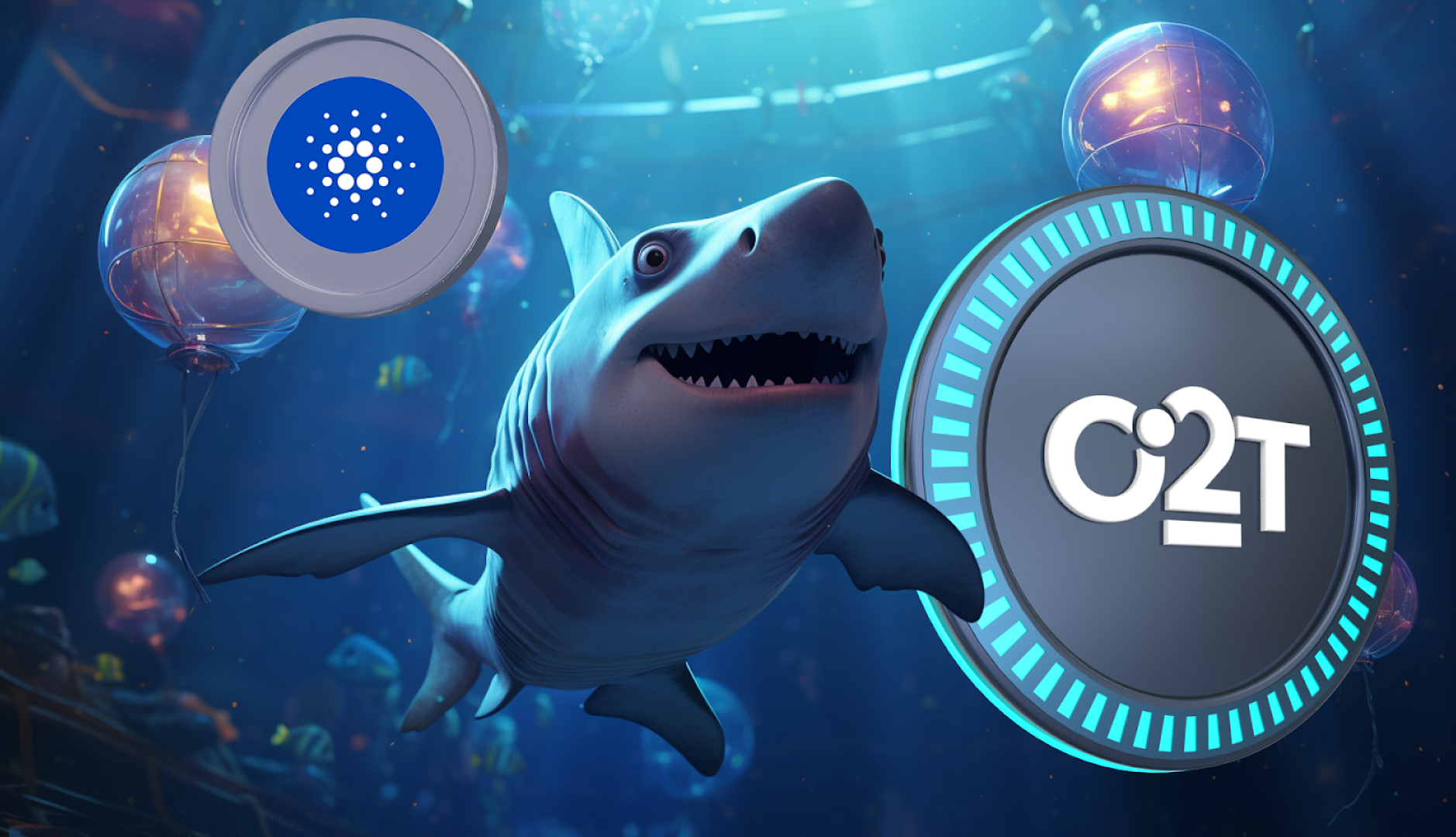Venom Network Review: Increase Scalability With Asynchronous Architecture
Blockchain technology has gained immense popularity in recent years due to its ability to provide secure and decentralized transactions. However, current blockchain solutions have faced challenges such as scalability, high transaction fees, and limited interoperability with existing systems. In this Venom Network review, let’s find out through the article below.
Venom Network, is a highly scalable, transparent, and secure Layer 0 blockchain protocol designed to host web3 applications. What makes it unique is its asynchronous architecture. Its unique architecture and technology allow Venom to provide high levels of performance and security, making it an ideal platform for decentralized applications.
What is Venom Network?
Venom Network is a layer 0 blockchain developed by the Venom Foundation and is also the first network supervised under the authority of ADGM – Abu Dhabi Global Market International Financial Center.
According to the Venom Foundation, their mission is to promote the widespread adoption of blockchain technology. They provide innovative technologies and frameworks that comply with the law and create a secure environment for a wide range of users, from retail customers to institutions and sovereign states.
Venom Network Review: Unique asynchronous architecture
To start with Venom Network review, this is a unique blockchain with asynchronous architecture. The network’s unparalleled innovation ensures endless scalability, low costs, and fast transactions. All those advantages are mainly due to its robust system design.
Asynchronous blockchain technology deviates from the order of transactions, which is why Venom Network promotes high scalability. Real-time processing and the large volume of transactions. Venom Network has very little difficulty achieving these specifications. When the network encounters too many trades, validators split into pools to process concurrent transactions, known as “split events.”
A heterogeneous multi-blockchain platform with dynamic sharding that is one of a kind and consists of a main chain, a work chain, and a shard chain, all of which work together as part of a powerful blockchain technology Venom Network’s power.
The three layers support parallel transaction processing, so Venom Network can process between 100,000 and 1 million transactions per second (TPS).
Main chain
As a layer 0 blockchain, it ensures that all necessary information is present to reach a consensus among validators. Therefore, you must consider this as a coordinator with significant responsibility for the workflow and the fragment chain. Information such as network configuration, implementation and scope of validators, and election rounds are all stored on the main chain. This is where the shard configuration begins and where you will find the latest block hash of the shard chain, where you will find the origin of our blockchain.
Workchains
Workchains are layer 1 blockchains hanging below the main chain. Each workchain features state transitions, cryptographic primitives, transaction or block structures, and native crypto while enjoying the security of the main chain. Rigorous security by consensus and central chain validator provides an opportunity for heterogeneous Venom Blockchain. Workchains can take on different roles and operate independently of each other. Venom has up to 2³² workstreams to support the Foundation’s grand ambitions.
Shardchains
Each Shardchain has the same DNA as the work chain. However, the liability is much more limited as it belongs to only a small group of accounts. Each chain has its own memory space, consisting of a set of smart contracts stored on the blockchain. Shardchain is limited to the transactions of these contracts only. With 2⁶⁰ shardchains per workchain, a huge amount of capacity can be accessed.
General advantages of asynchronous blockchain:
- Increased Scalability: One of the critical benefits of asynchronous blockchain technology is its scalability under high transaction volumes. This is done through dynamic sharding, which allows a blockchain to process transactions in parallel and significantly increases its overall throughput.
- Faster Transaction Processing: Asynchronous blockchain technology allows transactions to be processed independently of each other instead of in a sequential order. This means that transactions can be processed significantly faster, making it suitable for applications that require real-time processing.
- Lower costs: Asynchronous blockchain technology allows a blockchain to process transactions in parallel instead of sequentially. This means less processing power is needed to process a certain number of transactions, which can lead to lower costs for businesses and organizations. Users do not need to pay extra gas fees for transactions in front of the pool, as is done in outdated queuing methods like BTC and ETH.
Venom Network Review: Outstanding features
Dynamic sharding
The feature used by Everscale, Ethereum 2.0. Dynamic sharding enables increased transaction processing capacity and network capacity. In addition, Venom Network review allows to adjustment the number of shards based on network needs to ensure the platform can handle large transaction volumes without compromising security or decentralization.
Threaded Virtual Machine (TVM)
With Venom Network review, TVM helps to increase processing speed and improve network performance compared to traditional virtual machines. In addition, the TVM used on the Venom Blockchain is similar to the EVM on Ethereum, playing an essential role in the execution of smart contracts and decentralized applications on the blockchain.
However, the disadvantage of TVM is that it is challenging for developers because most developers will be more used to EVM than TVM. Therefore, to overcome this weakness, Venom Blockchain only allows the integration of EVM and other virtual machines in shardchains – an area with lower security than Basechain and Masterchain.
Threaded Solidity (T-Sol)
T-Sol is a new programming language exclusively for Venom Network. Therefore, T-Sol still needs to be more widely used and supported by the community than the Solidity language. This can be difficult for developers when they want to use T-Sol to build on Venom. However, given the size of Venom, many people are expected to support and use T-Sol in the future.
Venom Network Review: Ecosystem
Venom Wallet
It is a non-custodial crypto wallet for storing digital assets derived from the Venom blockchain, such as VENOM tokens, NFTs, and other custom tokens. Other functions include sending and receiving tokens, accessing Web3 marketplaces, swapping between multiple tokens, etc.
Venom Bridge
A bridge is a dApp that facilitates the exchange of digital tokens from one blockchain to another. The Venom Bridge supports such swaps between the Venom, Fantom (FTM), BNB Chain (BSC), and Ethereum networks
Venom pool
Validators who wish to verify transactions on Venom will use the Pool feature to stake their VENOM tokens, redeem rewards, and engage in other governance activities. This feature is currently in testnet mode
Web3World
A Venom blockchain-based decentralized exchange (DEX) relies on an automated market maker (AMM) model to generate liquidity. It offers the widest range of swap pairs with high liquidity as deep as possible. Similarly, as of publication, this DEX is yet to launch officially.
Venom scanner
As the name suggests, a scanner is a discovery service that allows users to track transactions, fee trends, and other critical network-related metrics;
Oasis Gallery
This is the first NFT marketplace on Venom Network to support a non-fungible token created natively on Venom. Users can browse, buy, sell, and trade these digital assets here as it launches.
These are official apps created and maintained by Venom Foundation only. Communities can also create and launch custom apps cost-effectively, meaning that with increased adoption, the number of dApps on Venom will surely grow.
Venom Network Review: Tokenomics
VENOM token
The Venom blockchain features a native platform cryptocurrency known as the VENOM token, which is a transfer of value within the Venom Network.
The VENOM token is currently inflated, with an initial market supply of 7.2 billion tokens. The document shows that the Foundation plans to change its supply metrics and transition to a deflationary model once several key metrics are achieved, including adoption, volume, and utility.
VENOM serves four main purposes:
- Payment of transaction fees;
- Governance through PoS consensus mechanism;
- Incentivize validators to participate in the transaction verification process to receive rewards;
- Increase network security by attracting enough validators.
WVENOM token
VENOM is the native token of the Venom blockchain, and WVENOM is a TIP-3 standard token implemented in smart contract code. DeFi protocols only support TIP-3 for ease of deployment and general compatibility, in this respect, the Venom network follows standard practice in most blockchains.
WVENOM is a swappable TIP-3 token issued 1-1 with the VENOM token. You always have the option of converting your WVENOM back to VENOM.
Venom Network Review: Gas and fees
A specific amount of Venom tokens must be attached when sending a message to the network. This is used to compensate validators for their work, cover the costs of storing the message on the network, and return any remaining balance as change.
There are several important characteristics of commissions:
- The cost per unit of gas on the network is fixed and is outlined in the global configuration, which can only be modified by the consensus of validators.
- The network also charges a commission for data storage for the entire duration of their existence in the network.
- The commission is always paid from the contract balance, as external messages cannot be value-bearing messages.
- The user decides how many VENOM to attach as payment fees from their contract account for the call. The attached value is the upper limit for the cost of executing the call chain. Typically, the DApp automatically suggests a recommended value for the user.
Each phase is associated with its own type of fee. Inbound external message fee: the only fee that is not related to the transaction execution phases described. It is charged when a transaction is initiated by an external message as a fee for sending the message (forward message fee).
Fees in the context of execution phases:
- Storage: related to the namesake fee (Storage fee) and charged for storing the contract and associated data.
- Credit: the only phase that does not involve charging any fee.
- Compute: charges a fee (Gas fee) for calculations performed in the called account (contract).
- Action: each outgoing message from the contract, both external and internal, must be paid a fee (Action fee) as a fee for sending the message.
- Bounce: in case of an error, an exception will be created, and an internal outgoing message will be taken, for which a fee will be charged as a fee for sending the message.
Conclusion
With a rapidly changing technology like blockchain, there is a need for a protocol that is more future-proof than first and second-generation networks. Venom Network review is heralding an innovative idea of having multiple layers supporting more than one type of blockchain.
With fast confirmation speeds, low transaction fees, regulatory compliance, and highly secure credentials, Venom is poised to be a remarkable smart contract and Web3 blockchain that competes directly with industry leaders current industry leader.
Join us to keep track of news: https://linktr.ee/coincu
DISCLAIMER: The information on this website is provided as general market commentary and does not constitute investment advice. We encourage you to do your own research before investing.























